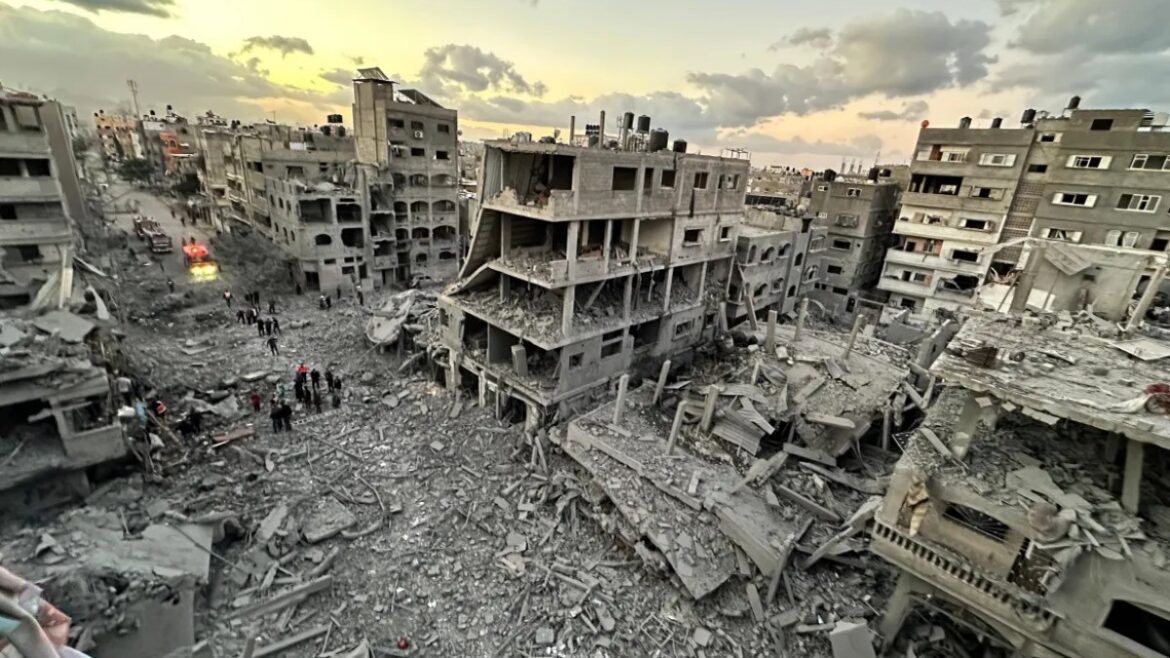12/13/2023–|Last updated: 12/13/202311:53 AM (Mecca time)
We are no strangers to human suffering, conflicts and natural disasters. We were there when fighting broke out in Khartoum, Sudan, and we attended the bombs falling on Ukraine, and when earthquakes struck southern Turkey and northern Syria we were there, and before that we were present when the Horn of Africa faced the worst drought in years, and the list goes on. .
With this introduction, The New York Times opened an article by a group of international figures involved in humanitarian work for ages, in which they expressed what is happening in Gaza. They are Michelle Nunn, President and CEO of CARE in the United States, Tejada Dwayne McKenna, CEO of Mercy Corps, and Jan Egeland, Secretary-General. For the Norwegian Refugee Council, Abby Maxman, President and CEO of Oxfam America, Jeremy Konyndyk, President of the International High Commissioner for Refugees, and Ganti Soeripto, President and CEO of Save the Children USA.
“As leaders of some of the largest international humanitarian organizations in the world, we have never seen anything like the blockade of Gaza,” these men and women say in their article in the newspaper.
In more than two months since the attack that killed 1,200 people in Israel, managers say about 18,000 Gazans have been killed, including more than 7,500 children, meaning the largest number of children killed in this conflict compared to all major global conflicts combined last year. .
Spread of infectious diseases
While the group expressed the “horror” of what was committed by the Islamic Resistance Movement (Hamas), they saw that the right to self-defense does not and cannot require unleashing this humanitarian nightmare on millions of civilians, as no other war in this century has witnessed “that “Civilians are trapped to this extent, with no means or option to escape to save themselves and their children.”
The article called on world leaders, especially the United States government, to change its approach to lifting Gaza out of this abyss, starting with stopping its diplomatic interventions at the United Nations and obstructing calls for a ceasefire, because the few remaining areas in Gaza that were not reached by the bombing are shrinking every hour, so that now there are more than 80% of Gaza’s population of 2.2 million are displaced.
The bombing is not the only thing that brutally interrupts people’s lives. The siege has led to severe food scarcity, interruptions of medical supplies and electricity, and a shortage of clean water. There is hardly any medical care available in the Strip, as surgeons operate by the light of their mobile phones without anesthesia, using towels. Dishes are used as bandages, and the risk of outbreaks of infectious diseases is increased due to overcrowded living conditions.
There won’t be a next day
Although little of the required aid has arrived in Gaza over the past two months since the war began, and even if more were allowed to enter, “work in Gaza depends on ensuring that our teams are able to move safely, but our staff are not safe. They tell us that they are making the decision to stay with their families in “One place until they die together or until they search for water and food.”
The group pointed to the constant talk of leaders in Washington about preparing for the “next day,” but if this bombing and siege continues unabated, there will be no “next day” in Gaza. Rather, it will be too late, because hundreds of thousands of lives are on hold today.
The article concluded that the horrific events taking place before the world, if the world does not change, will be the beginning of a legacy of indifference in the face of untold suffering, of bias in the application of the laws of conflict, and of impunity for actors who violate international humanitarian law.



